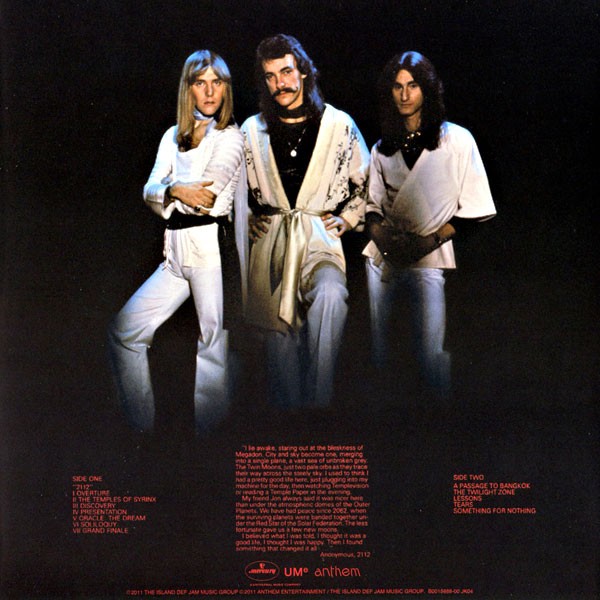

So it’s no wonder they were also big fans of The Who, since Tommy and Quadrophenia both proved that a hard rock band could write epic pieces. In their minds, they were still a hard-rock band, with Jimi Hendrix and Cream roots. Musically Rush was still enamored with prog rock – the band had discovered Genesis and King Crimson as well as Yes – but didn’t put themselves in that category. It remains Rush’s longest studio track, clocking in at 20:34, but each section stands out on its own. But the “2112 Overture” charges right out of the gate with an Alex Lifeson fanfare riff. The side-long Caress track “Fountain of Lamneth” was brilliant but dense, requiring a few listens to get your head around. Recorded at Toronto Sound Studios, 2112 proved as accessible as it was ambitious. Characteristically, they chose to do both on separate album sides, but it was the epic that really got noticed. So it left Rush with two choices: streamline everything and get more straightforward, or do another epic and make sure they got it right. A fan favorite in retrospect, it was a career-threatening flop at the time. With Fly by Night, drummer Neil Peart came in and broadened their musical reach by adding his own lyrical ambitions, informed at the time by a love of sci-fi.Īmbition went through the roof on the third album, Caress of Steel, which was apparently inspired by seeing Yes on their Topographic Oceans tour and sported two epics, one of which covered Side Two.

Every Rush album had been a departure: The first was solid hard rock, minus the intellectual streak, but with a couple of numbers (“Working Man,” “In the Mood”) that would stay in the setlist for keeps.

What led up to it?Ī prime influence of 2112 was three years of constant touring, which made the band sharp enough to carry out its grandest ideas. Listen to 2112 on Spotify and Apple Music.


 0 kommentar(er)
0 kommentar(er)
